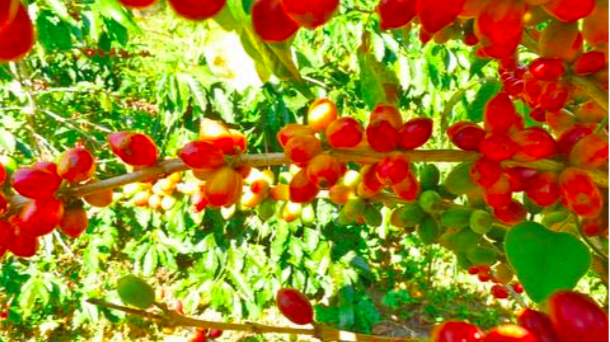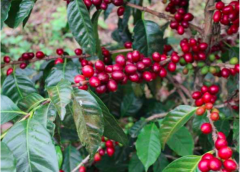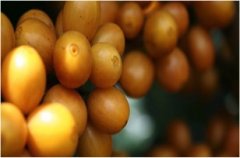Coffee World Map-Guatemala Flavor Characteristics, Growing Environment and Awards

Professional barista communication, please pay attention to coffee workshop (Weixin Official Accounts cafe_style )
"Guatemala" is a coffee friend's nickname for Guatemala. This Mayan city sits atop 37 volcanoes, two of which erupted in 2010. With frequent tornadoes and natural disasters everywhere, it is a veritable "dangerous place". However, fertile volcanic soil, undulating mountains and a variable microclimate are ideal conditions for growing coffee. As of 2011, Guatemala was the country with the highest coffee production in Central America.
Very hard beans, mild coffee. Best of the best.
In the past, importers divided coffee into two categories: Brazil and Mild. Brazilian coffee at that time was a negative example: mixed with unripe, overripe or defective beans, treated in unstable sunlight, the coffee produced was difficult to swallow and of poor quality. Guatemala, with its abundant water resources and mechanical technology from Germany, makes the advantages of washing treatment possible. Guatemala Strictly Hard Bean is the best of mild coffee.
The planting environment is changing
Coffee has been cultivated in Guatemala since around 1850. Before World War I, the Germans controlled up to 80% of the country's production, most of which was exported to Germany. ANACAFE, the official coffee farmers association, divided the country into eight regions in the 1990s based on geography and flavor, and promoted the origin of registered trademarks. These include Antigua, Acatenango, Huehuetenango and Atitlán, where many of the winning farms are located. Common bean varieties in Guatemala today include Typica, Bourbon, Caturra, Catuaí, Pacas, Maragogype, Pacamara (a mixture of the first two), Pache Comum (a local variant of Typica), and Gesha.
I have tried geisha coffee from different countries. A cup from Guatemala, from Acatenango. Because the taste is too unique, the characteristics of the place of origin are completely overshadowed. If the geisha show in Panama is a one-legged show, then Guatemala, which has a variety of planting environments, is a stage where different varieties bloom; Emerald Manor wins the championship with geisha, and Finca El Injerto (graft manor) in Guatemala.
Graft Manor Award Winning
Graft Manor Coffee has won the COE competition every year since 2004, and received the President's Class in 2006, 2008, 2009 and 2010 (i.e. total score of more than 90 points). However, unlike Jade Manor, which only competes with geisha, it competes with different bean seeds every year. Remember that in 2010, it won the title with 93.14 points for Pacamara species, which was rated as "low acid and light taste" at that time, and brought about the planting fever throughout Central America! So soil, climate and treatment are just as important as bean seed genes. Since 2011, Grafting, like Emerald Manor, has held its own auctions, including the rare ancient species Mocha, which sold for a record price of $550 per pound in 2012 and made headlines in The New York Times.
My shop is the first coffee shop in Hong Kong to participate in COE and win the bid successfully. Those interested in Guatemala's award-winning coffee may wish to try it.
Text: Patrick Tam (Knockbox owner of boutique coffee shop, accredited barista of American Fine Coffee Association and European Fine Coffee Association, CQI accredited cup tester of America, first Hong Kong judge of Cup of Excellence);
Important Notice :
前街咖啡 FrontStreet Coffee has moved to new addredd:
FrontStreet Coffee Address: 315,Donghua East Road,GuangZhou
Tel:020 38364473
- Prev

Coffee World Map--Panamanian coffee's rise, growing environment and flavor varieties
Coffee basics a quick and easy guide (Kevin Knox, John Wiley Sons Publications), published in 1997, describes Panamanian coffee this way: it is very similar to the coffee produced in Costa Rica's Tres Rios: balanced
- Next

Coffee World Map--Introduction to Rwandan Coffee Development, Processing and Varieties
Professional barista exchanges, please pay attention to coffee workshop (Weixin Official Accounts cafe_style ) Rwandan coffee, the most popular African coffee after Kenya and Ethiopia. However, unlike the two famous producing countries, it has no long history of cultivation, let alone wild native varieties; this small African country is a fire phoenix reborn after disaster. Rwanda is known as
Related
- Does Rose Summer choose Blue, Green or Red? Detailed explanation of Rose Summer Coffee plots and Classification in Panamanian Jade Manor
- What is the difference between the origin, producing area, processing plant, cooperative and manor of coffee beans?
- How fine does the espresso powder fit? how to grind the espresso?
- Sca coffee roasting degree color card coffee roasting degree 8 roasting color values what do you mean?
- The practice of lattes: how to make lattes at home
- Introduction to Indonesian Fine Coffee beans-- Java Coffee producing area of Indonesian Arabica Coffee
- How much will the flavor of light and medium roasted rose summer be expressed? What baking level is rose summer suitable for?
- Introduction to the characteristics of washing, sun-drying or wet-planing coffee commonly used in Mantenin, Indonesia
- Price characteristics of Arabica Coffee Bean Starbucks introduction to Manning Coffee Bean Taste producing area Variety Manor
- What is the authentic Yega flavor? What are the flavor characteristics of the really excellent Yejasuffi coffee beans?

